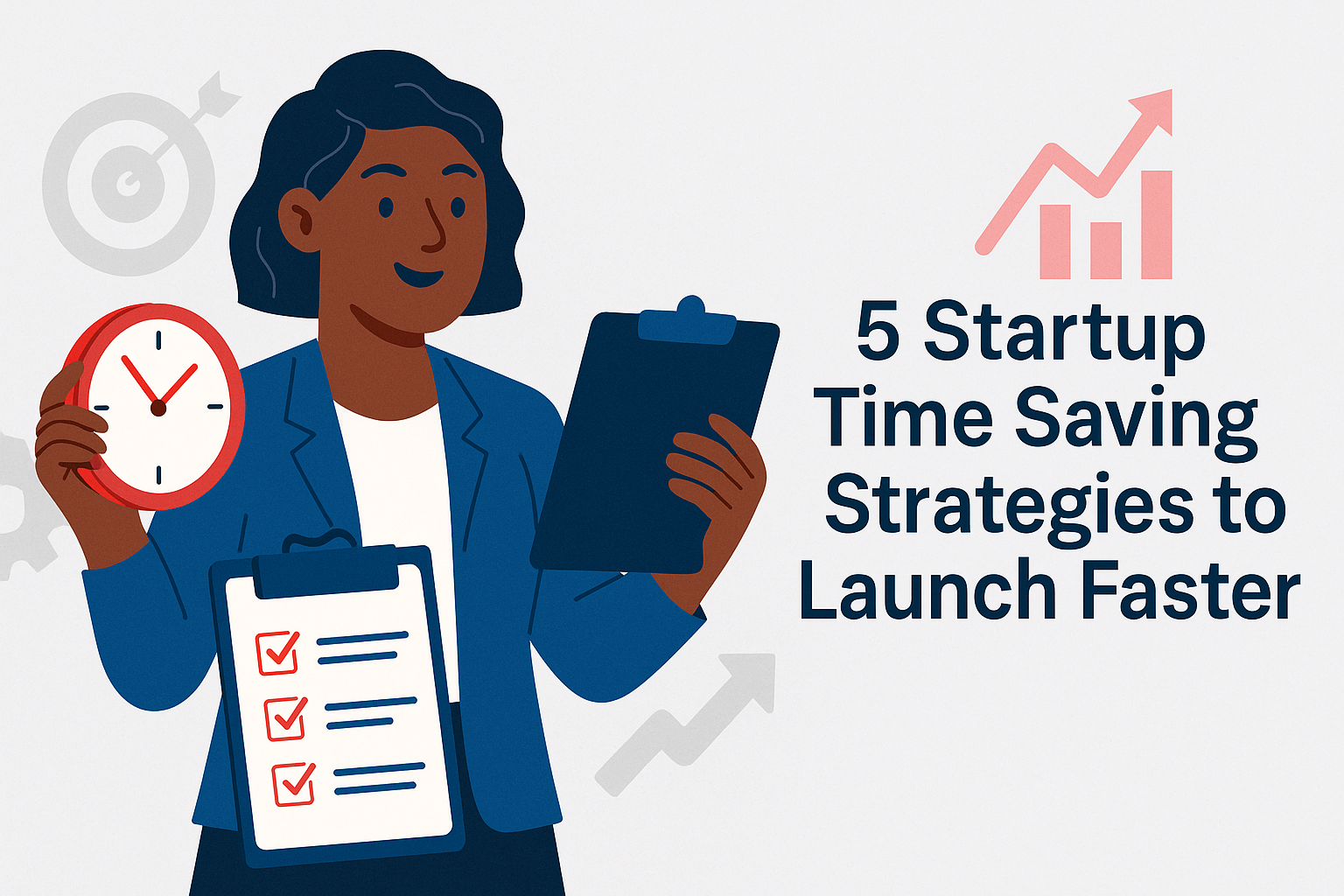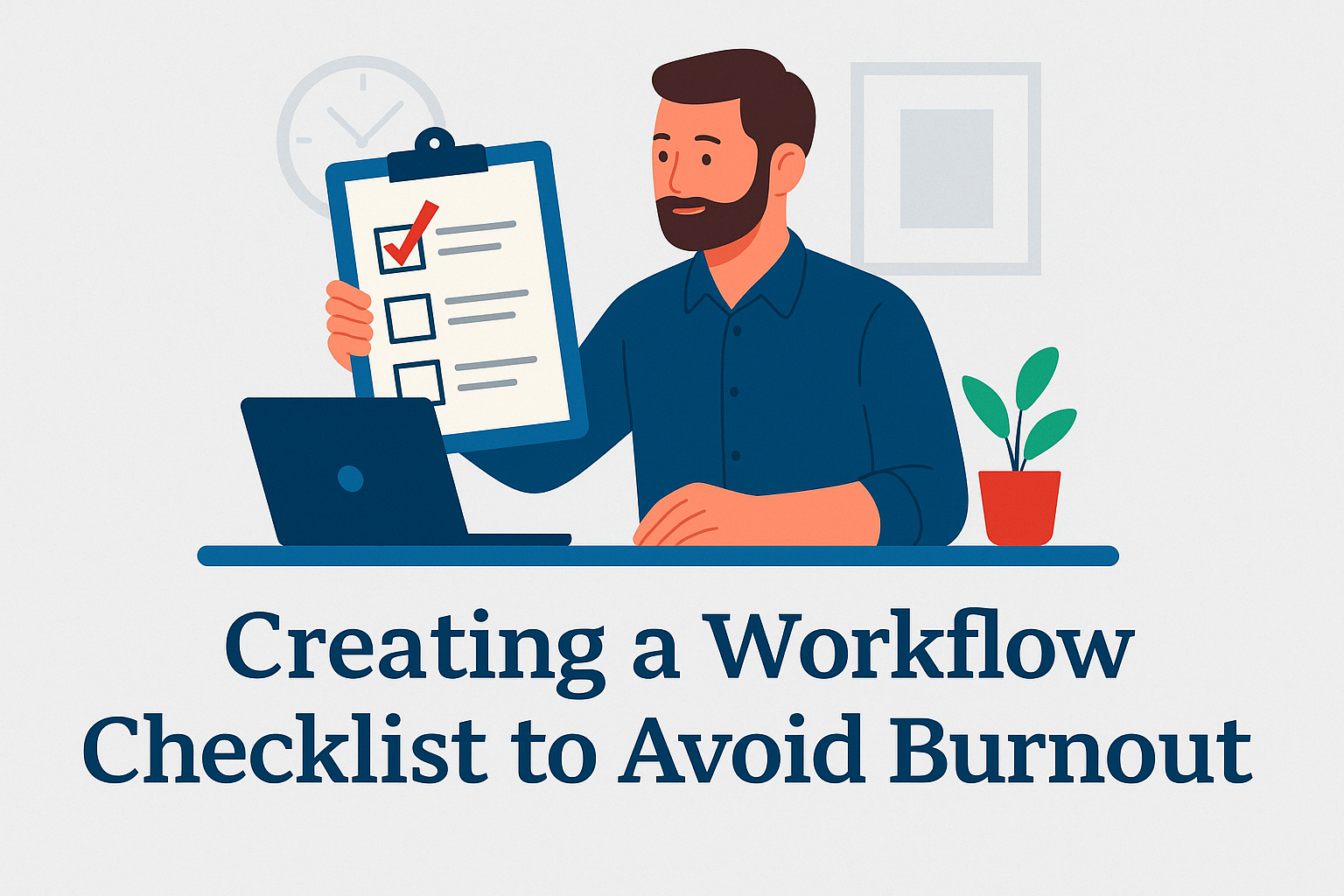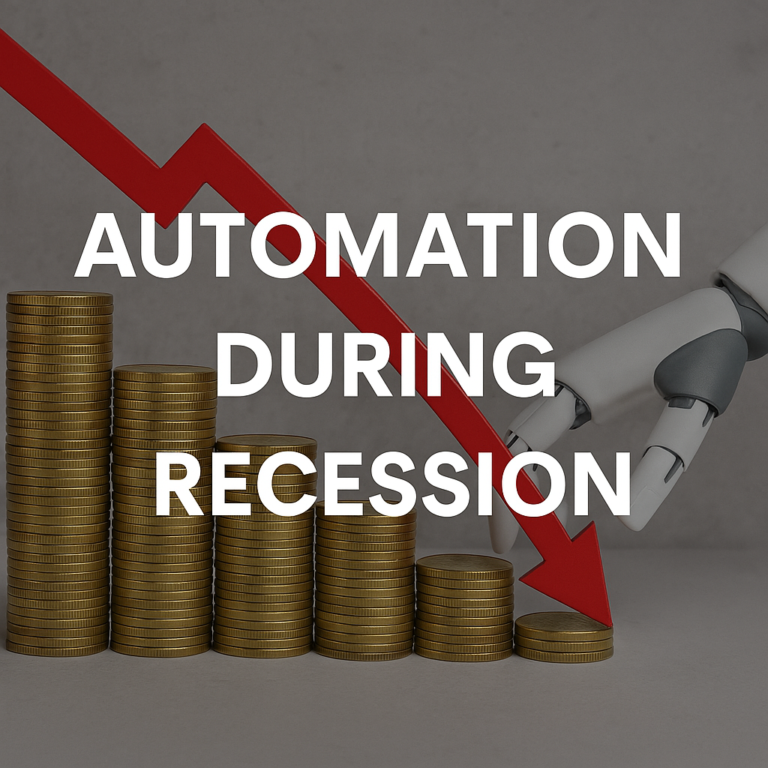Workflow Wednesday
Systems that prevent burnout aren’t something most entrepreneurs think about until they’re already exhausted. I know because I learned this lesson the hard way. In the early years of Backbone America, I tried to run a business on passion and ideas alone. Every blog post, every product, every launch felt like reinventing the wheel. I’d get a spark of inspiration, dive in, and build something from scratch. By the time I finished, I was too drained to sustain it — let alone build on it. A few burnout prevention systems would have come in handy back then.
That constant reinvention was more exhausting than the hours I put in. And it’s something I hear from other entrepreneurs all the time: it’s not just the workload that burns you out, it’s the inefficiency. Spinning your wheels, pouring energy into tasks that don’t move you forward, watching momentum slip away because there’s no system to carry it. That kind of burnout is avoidable.
The good news? You don’t have to wait until you’re running on fumes to protect yourself. There are systems you can put in place right now that make your business sustainable — systems that prevent burnout before it begins, and even pull you out of it if you’re already there. Today I’m sharing five of the most powerful burnout prevention systems I’ve learned to rely on.
System 1 – Automation That Removes the “Groundhog Day” Effect

Automation is the antidote. And no, it doesn’t have to be complicated. Setting up an email sequence to respond to leads, connecting a form directly into your CRM, or using a scheduling tool to eliminate back-and-forth are all small shifts that make a massive difference.
That’s where automation changes the game. Even something as simple as scheduling social posts automatically can free up enormous time. For example, I connected my blog to Jetpack Social so that each new post automatically publishes to multiple platforms. Before that, I was copying links, writing captions, and manually posting everywhere. It was tedious, and worse, it made me dread sharing my work. Now, I hit “publish” once, and the system does the rest.
The difference isn’t just the time saved — it’s the relief of not having to think about it anymore. Automation takes those repeat tasks off your shoulders so you can focus on bigger-picture growth instead of busywork.
System 2 – Time Boundaries That Protect Mental Energy
Another form of burnout shows up when your business quietly takes over your entire life. You sit down to “do a little work,” and suddenly it’s midnight. Weekends disappear into catch-up sessions. At first, it feels like dedication. But over time, the line between work and rest disappears — and resentment begins to build.
I didn’t understand the cost of this early on. I thought the more hours I gave my business, the faster it would grow. Instead, I felt drained and disconnected. What turned it around was building boundaries. Not vague resolutions, but real systems: blocking off business hours on my calendar, protecting rest time with the same commitment I give to client meetings, and treating downtime as a non-negotiable.
The surprising thing? My productivity didn’t shrink — it grew. With defined limits, I worked smarter inside the time I had. And when I stepped away, I came back refreshed instead of depleted.
Boundaries aren’t just discipline. They’re a burnout prevention system that protects your mental energy, your relationships, and your creativity. The business doesn’t need every hour of you to succeed — it needs the sharpest version of you.
System 3 – Delegation Through Documented Processes

But carrying everything on your own back is a fast track to burnout. Even when the hours are manageable, the mental load of being responsible for every detail grinds you down. That’s what nearly broke me in the early years of Backbone America. Every blog post, every course upload, every email campaign — all of it lived only in my head. Nothing was written down, nothing was documented, nothing was shareable. Which meant if I didn’t do it, it didn’t get done.
The turning point was simple: writing things down. Documenting steps for repeatable tasks turned invisible knowledge into a system. Suddenly, I had the option to delegate — whether that was hiring a virtual assistant for a few hours a week or asking a freelancer to handle one project.
Delegation isn’t about giving away control. It’s about creating breathing room. When you document processes, you free yourself from being the bottleneck. You gain back mental space for the big-picture work only you can do. And that shift alone can be the difference between stalling out and scaling up.
System 4 – Financial Tracking That Shows What’s Worth It
Nothing drains motivation faster than putting in endless effort and having no idea whether it’s actually paying off. You can be working long hours, building new offers, launching new products — and still feel like you’re running in place. For me, that’s when burnout hit hardest. I thought I was doing everything “right,” but the numbers weren’t clear. I couldn’t tell if the work was profitable, and the uncertainty was exhausting.
The fix wasn’t working harder — it was building a financial system. For some, that looks like setting up accounting software that automatically categorizes expenses and tracks revenue. For others, it’s a simple weekly spreadsheet that shows income, expenses, and profit at a glance.
The format matters less than the habit. When you see the numbers, you get clarity. You stop chasing projects that look exciting but bleed resources. You cut out busywork and double down on what’s actually profitable. That clarity lightens the load almost instantly, because you know where your energy is making a difference.
System 5 – Renewal Loops That Catch Problems Early
 Here’s the tricky thing about burnout: it rarely arrives in a single crash. It builds slowly. One day you’re motivated, the next you’re a little more tired, and before long you’ve lost the spark completely. By the time you notice, it feels like you’ve hit a wall.
Here’s the tricky thing about burnout: it rarely arrives in a single crash. It builds slowly. One day you’re motivated, the next you’re a little more tired, and before long you’ve lost the spark completely. By the time you notice, it feels like you’ve hit a wall.
That’s why you need renewal loops — systems that catch the signs before they spiral. For me, this looks like a weekly review. I sit down, look at what drained me, what energized me, and what small wins I can celebrate. Sometimes I track numbers, sometimes I just reflect. But the point is, I check in consistently.
When I skipped reflection, burnout snuck up on me. I thought the solution was to push harder, but all that did was accelerate the crash. Renewal loops gave me perspective. They reminded me that progress isn’t just about output — it’s also about sustainability.
For you, renewal might mean journaling, monthly planning sessions, or even an app that tracks energy and mood. However you build it, the effect is the same: you stay connected to the health of your business and yourself. That awareness lets you adjust before things collapse.
Wrap up: Systems Are the Real Burnout Cure
Burnout prevention systems aren’t about working less for the sake of laziness. They’re about working smarter so the energy you put in actually builds momentum instead of draining you.
Most of us don’t burn out because we lack ambition. We burn out because we build without systems — trying to carry everything in our heads, working without boundaries, chasing ideas without clarity. That’s not sustainable.
So here’s my challenge for you: pick one system from this list and put it in place this week. Automate one task. Block off your business hours. Write down one SOP. Create a quick profit snapshot. Schedule a weekly review. The choice is yours. One small shift can change the weight of your work more than you expect.
And if you want deeper strategies — not recycled tips, but real systems you can put to work — join my mailing list. You’ll get tools and insights designed to help you protect your energy while scaling your business: Sign up here.






